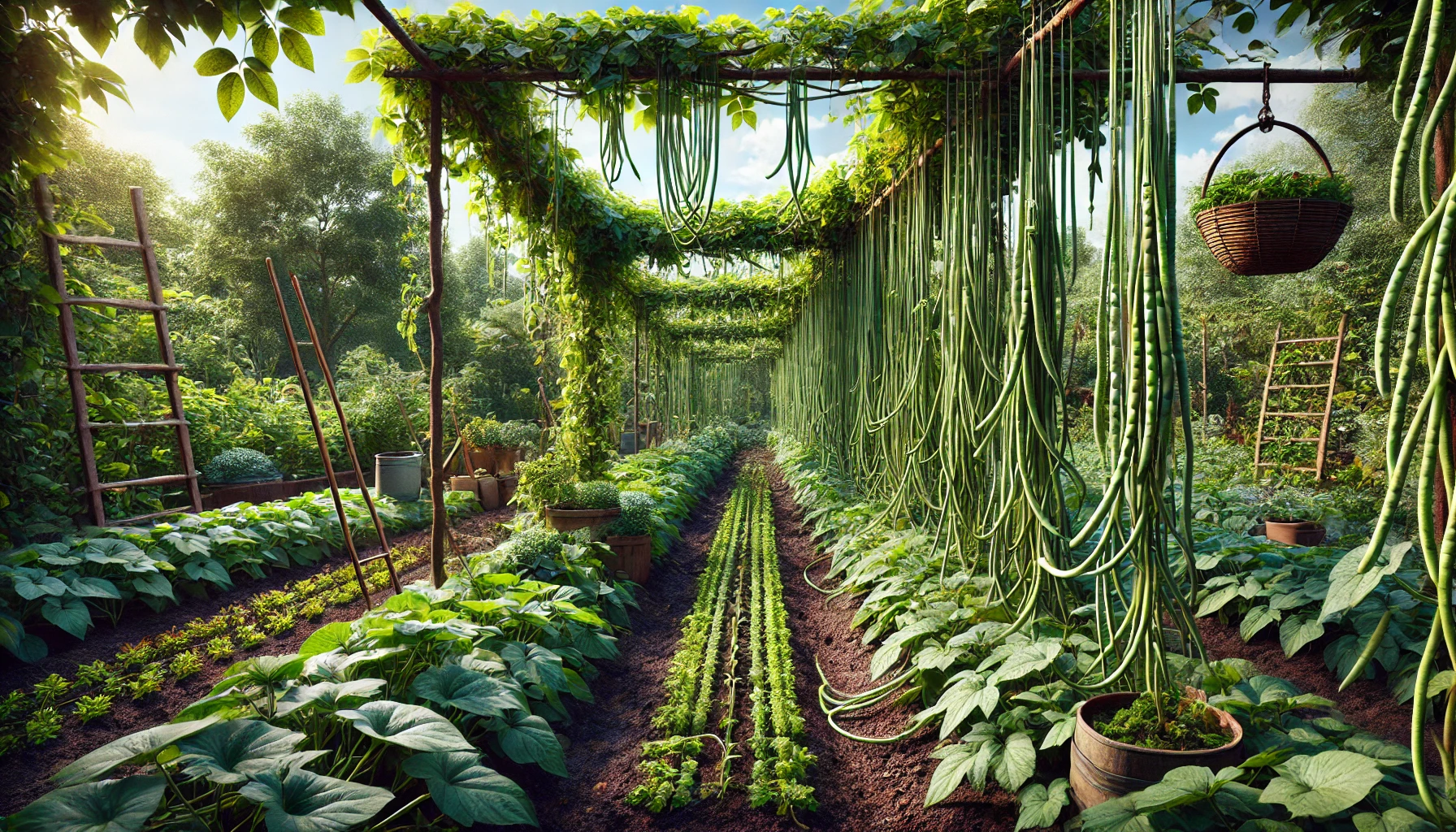Long bean, also known as yardlong bean or snake bean, is a vining plant prized for its long, slender pods and delicious flavor. Originating from Southeast Asia, this tropical plant thrives in warm climates and is a staple in many Asian cuisines. With proper care, you can easily grow long bean plants from seeds in your own garden.
Perfect Weather Conditions:
| Weather Condition | Description |
|---|---|
| Temperature | Warm temperatures between 70°F and 90°F (21°C – 32°C) |
| Sunlight | Full sun exposure for at least 6-8 hours per day |
| Humidity | Moderate to high humidity levels |
| Soil | Well-draining, rich soil with pH level around 6.0-6.8 |
Choosing the Right Seed:
When choosing seeds, select varieties labeled as suitable for your growing zone and climate. Look for seeds that are plump, firm, and free from damage or signs of mold. Alternatively, you can collect seeds from mature long bean pods by allowing them to fully ripen on the vine, then drying and storing the seeds in a cool, dry place.
Growing Seedlings from Seed:
- Seed Starting: Start seeds indoors 3-4 weeks before the last frost date in your area.
- Seed Planting: Plant seeds 1 inch deep in seed starting trays filled with seed starting mix.
- Watering: Keep the soil consistently moist but not waterlogged.
- Lighting: Place trays in a warm, sunny location or under grow lights for 12-16 hours per day.
- Transplanting: Once seedlings have developed 2-3 sets of true leaves, transplant them into individual pots filled with potting soil.
Nutrition Requirements:
Long bean plants require essential nutrients for healthy growth and optimal yield. These include nitrogen, phosphorus, potassium, calcium, magnesium, and micronutrients like iron and zinc. Each nutrient plays a vital role in plant development, from promoting leafy growth to enhancing fruit production.
| Nutrient | Function | Requirement |
|---|---|---|
| Nitrogen | Stimulates leaf and stem growth | Moderate |
| Phosphorus | Promotes root development and flower formation | Moderate |
| Potassium | Enhances fruiting and overall plant vigor | Moderate |
| Calcium | Prevents blossom end rot and strengthens cell walls | Moderate |
| Magnesium | Aids in chlorophyll production and photosynthesis | Moderate |
| Micronutrients | Essential for enzyme activity and overall plant health | Trace amounts |
Making Perfect Soil Mix:
To create the ideal soil mix for long bean plants, combine the following organic ingredients in the specified amounts:
- Garden Soil: 40%
- Compost: 30%
- Peat Moss or Coco Coir: 20%
- Perlite or Vermiculite: 10%
Seedling Transfer:
- Preparation: Choose a sunny location with well-drained soil for transplanting.
- Hardening Off: Gradually acclimate seedlings to outdoor conditions for 7-10 days before transplanting.
- Transplanting: Dig holes slightly larger than the root balls of the seedlings and gently place them in the holes.
- Watering: Water thoroughly after transplanting to help settle the soil and reduce transplant shock.
- Spacing: Space seedlings 6-8 inches apart in rows or plant them in hills.
Stages of Growth:
- Seedling Stage (0-2 weeks):
- Water seedlings regularly to keep the soil evenly moist.
- Avoid overwatering, as soggy soil can lead to root rot.
- Provide gentle air circulation to prevent damping off disease.
- Vegetative Stage (2-6 weeks):
- Fertilize with a balanced fertilizer high in nitrogen to promote leafy growth.
- Mulch around plants to conserve moisture and suppress weeds.
- Train vines onto trellises or supports to encourage upward growth.
- Flowering and Fruit Set Stage (6-10 weeks):
- Switch to a fertilizer higher in phosphorus to encourage flower production.
- Provide adequate support for heavy fruit-laden vines to prevent breakage.
- Monitor for pests and diseases, and take appropriate action if detected.
- Harvesting and Preserving:
- Harvest long bean pods when they are young and tender, about 12-18 inches long.
- Use clean, sharp scissors or pruning shears to avoid damaging the plant.
- Store harvested beans in the refrigerator for up to one week, or blanch and freeze them for long-term storage.
By following these guidelines, you can successfully grow long bean plants from seeds and enjoy a bountiful harvest of delicious, homegrown produce. Happy gardening!



